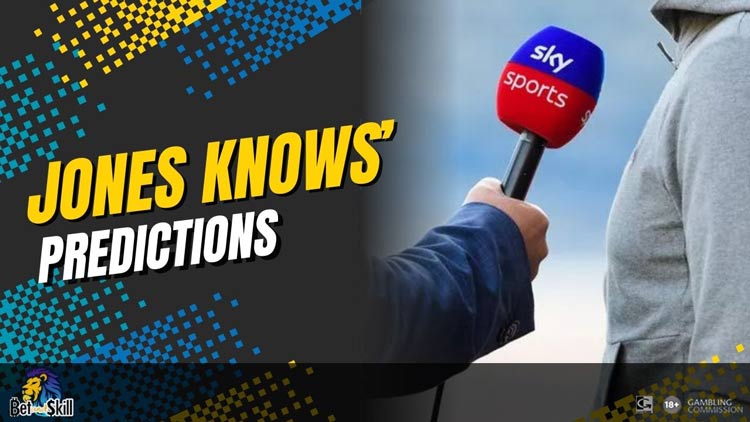Suspension and injury to players can be a significant element in predicting the results. This is a significant aspect in determining a team’s performance.
Key players. The absence of key players or players who play crucial roles in a team (such as goalkeepers or quarterback) can seriously hamper their effectiveness.
Depth in the squad: Teams with less depth can struggle with suspensions, injuries and replacement players who might not meet the standards of their first choice.
Tactical Changes
Formation and Strategy: Coaches will need to adjust their tactics and formations to compensate for the absence of players. This could disrupt the flow and efficiency of the team.
The rest of the players might be expected to adjust to a new position or task, which could impact team performance and cohesion.
Psychological Impact
Team morale – The absence of key players could affect the team’s morale and the trust, of the entire team.
Confidence of Opponents: Opponents might feel more confident when facing a weakened group.
Historical and statistical data as well as statistics
Past Performance: Historical data on how teams perform without specific players may help to determine the impact that could be expected. Some teams have systems and backups that are effective, whereas other teams struggle.
Game Context
Match Importance. The match’s importance (e.g. playoffs vs. regular season) can affect how an absence of players will affect the team. When it is a crucial game, teams might have additional motivation or strategies for dealing with absences.
The strength of your opponent Strength and quality of your opponent is crucial. A team with more strength can take advantage of the absence of players more effectively.
Recovery and return:
Understanding the severity and healing time of an injuries is vital. Long-term injuries may have a different effect than short-term ones.
After Returning: It may take a few weeks for players to get back to their fitness levels.
Market Reactions
Betting Odds: Injuries and suspensions often result in an increase in the odds of the betting market, reflecting the impact they are perceived to have an impact on the team. Analyzing these market reactions can provide additional insights into how significant the absences are judged to be.
In conclusion, injuries and suspensions of players are crucial elements when it comes to predicting sports results. They affect team dynamics, strategies and overall performance, making it essential to consider them in conjunction with other factors such as form, head-tohead records, and external conditions to make a sound prediction. Read the most popular soccer predictions tomorrow for website info.

What Is The Importance Of Strategic And Tactical Considerations When Predicting Sports Results?
When trying to predict sporting results, strategic and tactical considerations play a major role. They are the process of planning and execution of game plans which capitalize on the strengths of a team, while focusing on the weaknesses of the opponent. Here is a more thorough explanation of these aspects that are important:
Matchups are usually the most important element to effective strategies. As an example, a football club might use a quick full-back to play a team that uses a wingsman.
Adjusting to the Environment: Teams can adjust their strategies according to weather conditions as well as playing surfaces and locations, which can maximize their strengths.
Flexibility and adaptability:
Modifications in-game: Teams that can adjust their game plan when playing more effectively are more likely to win. This can include tactical changes and changing formations.
Team members who are able to counter the strategies of their adversaries will be more likely to succeed. Understanding the opponent’s tactics and anticipating them can help you neutralize any of their strengths.
Defensive as well as offensive strategies
Defensive organisation: Strong defensive tactics, like a high-pressing or deep defending can deter the attack of your opponent. Teams that are well-organized tend to concede fewer goals.
It’s possible to attack in many ways, whether it’s through swift counterattacks, possession play or specialized attack on set pieces, will help you beat even the most well-organized defense.
Roles of players and teams:
Clearness of roles: The roles of the team must be clearly defined in order to ensure that everyone understands what they are responsible for. This clarity is essential for executing the overall plan.
Key Players – Using key players in roles which maximize their impact is important. For instance the role of a playmaker or a attacking target player.
Analyzing the historical and contextual aspects
A look back at previous experiences can give you a sense of what to anticipate.
The current form and tactical aspects must be aligned with the current structure of a team or players. If the team’s form has changed, then a tactic that worked previously may have to be rethought.
Psychological Effects:
Confidence comes from preparation. Well-prepared and well-defined teams tend to play confidently. This psychological edge is crucial in tight matches.
Disrupting Opponents: Effective tactics can frustrate opponents, leading to errors and lower morale which is crucial.
Sport-Specific Considerations:
Soccer: Set-piece patterns, pressing styles and formations (e.g. 4-3-2 or 3-5-2) are all crucial. The selection of tactics will determine the control of midfield as well as the utilization of large areas, or the capacity to break down defensive lines.
Basketball: It is important to have a strategy that includes zones defense (vs. man-toman), pace of play, offensive plans, e.g. pick-and-roll or isolation plays.
Cricket: Field positions (e.g. T20 vs. T20), bowling rotations (e.g., T20 vs. T20), and batsmen’s orders play a crucial role in the game.
The influence of the coach and management on the team:
Tactical Know-How: The success of the football team is usually determined by the coach’s knowledge of the game. His ability to create and implement effective tactical strategies is a key aspect.
Team Buy-in: The extent to which players understand the strategy and have bought in affects its implementation. A coordinated execution of the plan is essential.
It is evident that strategic and tactical factors are essential to the prediction of sporting outcomes. They impact every aspect of the sport including individual performance and team dynamics. The combination of a deep knowledge of tactics, and examination of other aspects such as injuries or form. will help you in making accurate predictions. View the most popular atp tennis results today for more tips.

What Are The Psychological Factors That Affect Sports Performance?
Psychological factors play a crucial impact on performance in sports. They affect the mindset, motivation, and performance for teams and individuals. The reason for this is that psychological factors are important: Confidence and self-belief
Teams with a positive mindset and players who have confidence and self-belief will be more likely to be at their best in stressful situations and when facing tough adversaries.
Resilience. Psychological resilience is what allows teams to overcome setbacks. It helps them remain focused and achieve success even in the face of difficult conditions.
Motivation and Determination
Intrinsic Motivator: Internal aspects of pride, personal goals and a passion for sports can help players be at their best regardless of external pressures.
External motivations: Things like team goals and fan support can also motivate and inspire.
Mental Toughness
Ability to Handle High Pressure Ability to withstand high pressure: Teams or players that are able to demonstrate a high degree of mental toughness can cope under stress and remain calm when taking decisions when under pressure.
Concentration and Focus. Mental toughness is what allows athletes to focus on the task in the moment. They are able to eliminate distractions while playing and maintain their concentration.
Team Cohesion:
Positive Relationships – Strong bonds and positive relationships among colleagues can lead to improved communication, trust and collaboration.
Team members with a shared goal – Teams that have an unifying purpose and a common goal are more likely to overcome obstacles and succeed.
Handling Adversity:
Psychological factors can influence the way teams react to setbacks. The way teams and their players respond to setbacks (such as conceding a tally or trailing the game) can be affected. Teams that are resilient are more likely to regroup and mount comebacks.
Mental Rebound: To overcome past failures and disappointments, you must have mental resilience and the ability to change and keep moving forward with renewed determination and the ability of learning from your mistakes.
Preparation and Visualization
Mental Preparation: Visualization strategies such as mental rehearsal, positive affirmations can help athletes mentally prepare for competition, enhancing confidence and performance the day of the event.
Mental imagery. Visualizing positive outcomes can increase confidence in athletes and ease their anxieties.
Opponent Perception:
Respect and respect. Intimidation. How teams perceive and treat their opponents will influence their mindset and attitude towards the game. There is a way to foster an aggressive, yet focused attitude by showing respect without intimidation.
Inadequate expectations can lead to unpreparedness, complacency and a rise in chances of an upset.
Coaching and Influence on Leadership
Captains and coaches who have a leadership impact have an important role to influence the team’s mental climate. Their leadership style and manner of communication instills confidence, motivation and resilience.
Psychological Support – Supplying athletes with mental assistance and encouragement can help them deal under pressure, overcome obstacles and perform to their best.
Conclusion: Psychological factors are crucial to consider when predicting sports results, as they have a major impact on both team and individual performances. Understanding the psychological dynamics that play out is not easy to quantify, but it provides valuable information on how teams or players can perform under various conditions. Combining psychological factors along with other factors, such as the way of playing, tactics, and other external conditions, can provide more comprehensive and accurate predictions. 